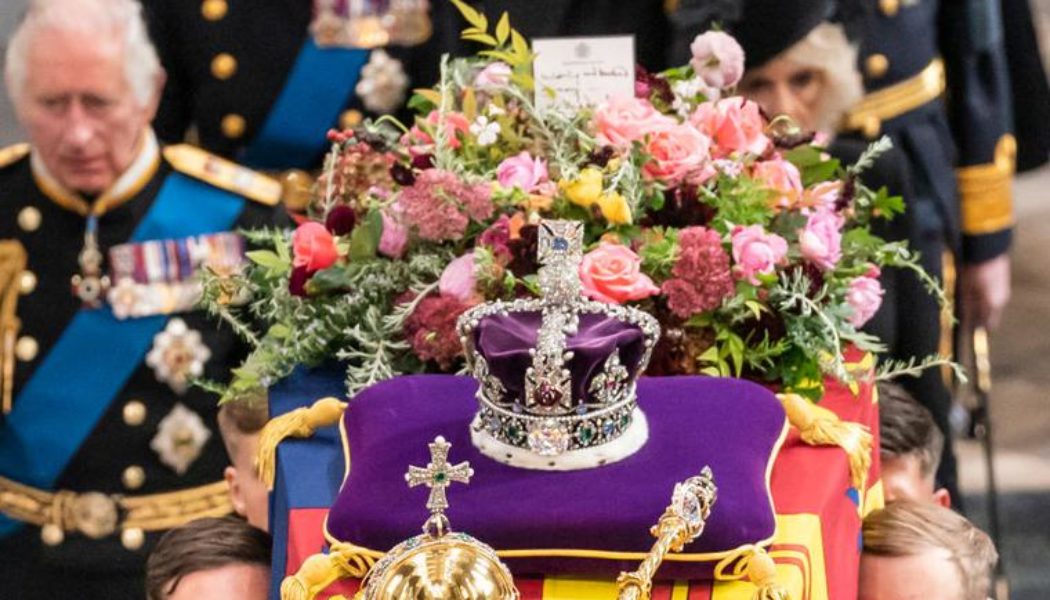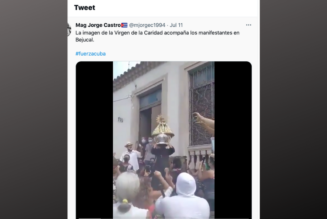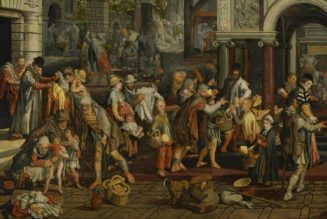
It was the grandest state funeral in history for history’s longest-serving monarch.
First and last, though, it was a Christian funeral.
The Church of England rendered a signal service to all Christians in providing a model for how funerals ought to be conducted, in a time when both sacred and civic funeral liturgies have become rather emaciated.
The Priority of Prayer
The Queen was rightly and well eulogized in various ceremonies in the past week. The day of her funeral was a day for prayer.
From the moment the funeral cortege entered Westminster Abbey to the singing of I Am the Resurrection and the Life, the mystery of death and eternal life took precedence over all others.
“We will all face the merciful judgment of God,” preached the archbishop of Canterbury, Justin Welby.
The archbishop preached a magnificent funeral homily, a model for all Christian funeral preaching. He preached truths about the queen’s “servant leadership” but presented her as a Christian disciple first and monarch second. The day included the height of British pomp and pageantry, but Archbishop Welby noted that “death is the door to glory.”
The sheer length of the queen’s life and reign were underscored as her earthly remains passed underneath the statues of the 20th-century martyrs installed over the abbey’s great west door for the millennium. The queen was born three years before Martin Luther King Jr.’s birth, and when she came to the abbey for her wedding in 1947, St. Maximilian Kolbe had not even been dead a decade.
Completely absent were speeches by secular officers of state. And to that welcome silence was added the profound, even palpable silence of the enormous crowds around the abbey and along the mall to Buckingham Palace. It was a manifestation of reverence, a public virtue much required for a healthy common life.
The Richness of Ritual
The ritual for a deceased monarch is richer than for any other, and the funeral masterfully permitted the ritual to speak. The congregation in St. George’s Chapel at Windsor stood in silence as the instruments of the queen’s earthly power — the orb, scepter and imperial state crown — were removed from the coffin and placed on the high altar. Then they sang Christ Is Made the Sure Foundation. What more need be said about the basis for all authority?
Catholic liturgy might learn something. Our current graveside rituals are banal. Contrast those with the sight of the coffin being lowered into the royal vault, while the dean of Windsor recited Psalm 103:
“For he knoweth our frame;
he remembereth that we are dust.
As for man, his days are as grass:
as a flower of the field, so he flourisheth.
For the wind passeth over it, and it is gone;
and the place thereof shall know it no more.”
Then he recited the stirring and solemn prayer, “Go forth Christian soul, from this world …”
Too often at Catholic burials the coffin is left alone above ground, and the prayers are less than satisfactory. The combination of Psalm 130 and “Go forth …” as the coffin was lowered would be a significant improvement.
The Catholic Contribution
Though Catholic funeral rites could learn a great deal from the queen’s funeral, there was included a noteworthy Catholic presence.
The first reading from 1 Corinthians — “O grave, where is thy victory?” — was read by Baroness Janet Scotland, herself a rather regal presence. Born in Dominica into a Catholic family which emigrated to Britain, she rose to serve in the British cabinet before becoming secretary general of the commonwealth. In that capacity she was chosen to read, and by her very presence — a Black Catholic from the Caribbean — demonstrated the expansiveness of the late queen’s vision.
Sir James MacMillan, knighted by Queen Elizabeth, one of the leading Catholic composers in the world, composed a setting of Who Can Separate Us? especially for the funeral, a high honor in one of the great sacred music settings anywhere.
Cardinal Vincent Nichols of Westminster was present and read a prayer for the commonwealth. Also present in places of honor were Archbishops Eamon Martin of Armagh (Northern Ireland) and Leo Cushley of St. Andrews and Edinburgh (Scotland). Their presence testified to how the queen contributed much to healing the Anglican-Catholic divide in the United Kingdom.
In a touch of sheer liturgical genius, at the committal service at St. George’s, the great bridge between the Anglican and Catholic traditions, St. John Henry Newman, was included. Cardinal Newman’s inspired “Night Prayer” was invoked and henceforth should be included in every Christian funeral in the English-speaking world. My eyes filled with tears — not the only time on this day — when I heard it:
“O Lord, support us all day long,
until the shadows lengthen,
and the evening comes,
and the busy world is hushed,
and the fever of life is over,
and our work is done.
Then in your mercy,
grant us a safe lodging and a holy rest,
and peace at last. Amen.”
The Vatican Misses the Mark
One off-key note was the choice of the Vatican representative, Archbishop Paul Gallagher, secretary for relations with states. Likely chosen as an Englishman himself, it was poor form not to send a cardinal. Cardinals, as British protocol officers would know, enjoy a diplomatic status that ranks them with royalty; they are “princes” of the Church.
The cardinal secretary of state should have been sent, as the queen sent Prince Charles, now the king, to St. John Paul II’s funeral in 2005. How important was it to the late queen that she be properly represented at John Paul’s funeral? Prince Charles was to be married to Camilla that very day. The queen insisted that he go to Rome and postpone the wedding.
It was odd for Pope Francis to choose a diplomatic representative for the queen’s funeral, given that she was supreme governor of the Church of the England. Alongside the cardinal secretary of state there should have been included the cardinal president of the Dicastery for Promoting Christian Unity, recognizing her religious status as well as her civic one.
The Holy Father was poorly advised, and it reflected badly on the Vatican.
Presidential Presences
At the last funerals of global importance — Nelson Mandela and John Paul II — the tradition of sending multiple former presidents was observed. President Ronald Reagan employed that practice after the assassination of Anwar Sadat in 1981, when he took all the former living presidents to Egypt for the funeral.
This time, it was wisely thought best to limit the American presence to President Joe Biden and the first lady, thereby avoiding tensions between the incumbent and his immediate predecessor.
The occasion did call to mind the American delegation to John Paul II’s funeral, where President George W. Bush was accompanied by his father, President George H.W. Bush, and Bill Clinton. The image of the three presidents kneeling before John Paul’s body in St. Peter’s is unique in the history of the presidency. Protestant presidents rarely kneel.
The three presidents arrived early so that Air Force One would not cause havoc for the arrival of other world leaders, a gesture of exquisite courtesy by President Bush. While Bush kept quietly out of sight the day before the funeral out of respect, Clinton took advantage of the vacuum, doing a bit of glad-handing and staging two dinners. No doubt the royal courtiers were happy not to contend with either Clinton or Trump.
The Power of Words — and the Word
British state ceremony deploys the riches of the English language with precision and loveliness. Anglican liturgical usage knows too the power of sacral language. The language of today — from the formal proclamations to the carefully constructed prayers — was both elevating and educating.
Most notable, though, was that the name most often spoken throughout the day’s obsequies was not that of Queen Elizabeth, but Jesus Christ.
May Her Late Majesty rest in peace.
And may God save the King.
Join Our Telegram Group : Salvation & Prosperity








